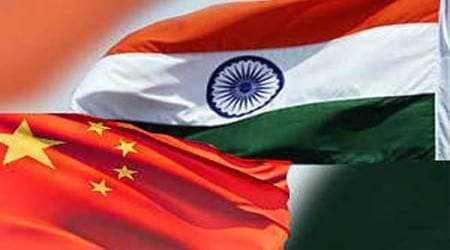 Arranged across nine chapters, the book begins with coal in the colonial era right up to the late 1960s, and then moves on to the Coal Mines (Nationalisation) Act of 1973.
Arranged across nine chapters, the book begins with coal in the colonial era right up to the late 1960s, and then moves on to the Coal Mines (Nationalisation) Act of 1973.
Let me start with the positives. Subhomoy Bhattacharjee’s book on India’s coal story has all the facts that a person might want to know about this industry. And I truly mean it — from July 1836 when, through Carr, Tagore and Company, Dwarkanath Tagore (Rabindranath Tagore’s grandfather), bought out a Raniganj mine in the district of Burdwan some 130 miles northwest of Kolkata, the nationwide scandal on coal block allocations triggered by the Comptroller and Auditor General’s report of August 2012 to Naveen Jindal’s foray into tapping the coal deposits of Mozambique. It is replete with information, hard facts, interviews and extremely plausible conjectures which makes the book an essential reference kit for anyone interested in this complex and messy industry.
Arranged across nine chapters, the book begins with coal in the colonial era right up to the late 1960s, and then moves on to the Coal Mines (Nationalisation) Act of 1973. This was a cornerstone of Indira Gandhi’s nationalisation-driven socialist rule after the Bangladesh war and the bill was enthusiastically piloted by Mohan Kumaramangalam, a sophisticated and erudite trade union leader, an ex-Communist Party of India cadre and her minister for coal and mines. Describing the private sector mines as relics of the Middle Ages and instruments of human oppression, Kumaramangalam argued that if nationalisation was postponed by another 25 years, there would be little or no coal left for the country, barring uneconomical, hazardous units, underground fires and poorly paid workers. Coal nationalisation was Mohan Kumaramangalam’s last hurrah. Very soon afterwards, he was one of the 48 who died in a terrible Indian Airlines crash on 31 May 1973.
The next chapter, ‘Coal on Sale’, looks at the large scale illegal theft in the mining and sale of coal in the decade or so that followed nationalisation — the stuff that made multi-millionaires of thugs led by the infamous four-term MLA Surya Deo Singh who became the legend and godfather of Dhanbad, as well as others such as Babloo Srivastava, Brijesh Singh, Hari Shankar Tiwari and Virendra Pratap Shahi. A part of every transaction in the nationalised mines from recruitment to sales and transport had to be paid to these goons; nothing could work without their say-so and their cuts. Bhattacharjee then uses the theme of ‘coal on sale’ to transit from small to very large sales via Manoj Jayaswal, a hitherto unknown cricket-loving businessman from Nagpur and his application for a large coal block in Chhattisgarh; to be followed by Naveen Jindal and Sandeep Jajodia of Monnet Ispat.
That sets the stage for Bhattacharjee’s next chapter entitled, self-evidently, as ‘Notes from an Auditor’. It covers the famous CAG report under Vinod Rai’s tenure and goes into the entire coal mine leasing scam in great detail — including the irreparable political damage it caused prime minister Manmohan Singh, the intervention of the Supreme Court which nullified almost all hitherto held coal block auctions, and the travails of the coal secretary PC Parakh and his successor Harish Chandra Gupta. To my mind, it is the best chapter of the book.
After that, the book meanders over the next four chapters. To be sure, it looks into some key issues such as environmental brakes and the part that Jairam Ramesh played as the minister for environment and forests; the role of entrepreneurs; the cost of the failure of coal block auctions to the banking system, especially those that had large exposures in coal based power plants and associated mining rights; a foray into international acquisitions, mostly in sub-Saharan Africa; and on India’s energy ambitions. Each chapter has considerable information. However, these somehow do not hold together as part of a continuous book.
Which brings me to my basic criticism. Here is a book that has enough material to have become a classic on the subject. Yet, it begs a coherence of purpose and narrative that such a book demands. It is as if there are many informative journalistic copies, each structured in 600-word formats, but few flowing from one to the other, to create tightly knit chapters leading to an ‘un-put-down-able’ book. Unlike, for instance, the books of fellow journalists such as Andrew Ross Sorkin’s Too Big to Fail, William D. Cohen’s Money and Power, any of David Halberstam’s works and, nearer home, some of Arun Shourie’s books or TN Ninan’s Turn of the Tortoise, Bhattacharjee does not tie together the many fascinating micro-pieces into the structure of a consistently well reading book. Perhaps it reflects the absence of the publishing editor, who ought to have helped in this task. Also, there are some serious editorial shortfalls, the most obvious one being that, despite having a 14-page bibliography printed in a tiny font-size, there is not a single footnote or endnote in the text to correlate these with the references.
There are so many informative nuggets in this work which, if fused well, ought to have made for a great book. It is, no doubt, a sound reference guide. But it could have been so much more. And that’s the pity.







